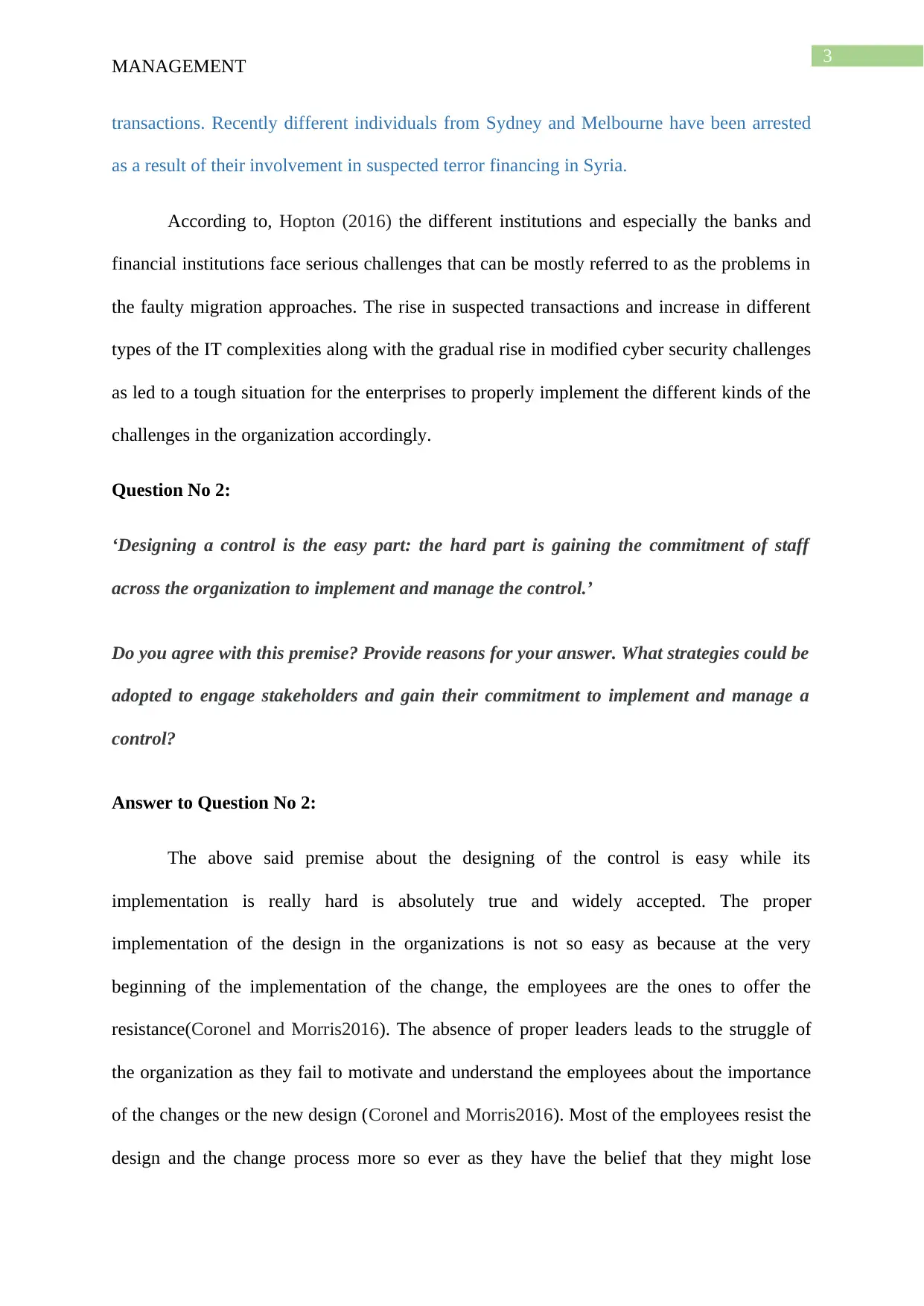University Finance Assignment: ML/TF Risk Mitigation and Control
VerifiedAdded on 2022/10/12
|5
|870
|10
Homework Assignment
AI Summary
This assignment delves into the critical area of Money Laundering and Terrorist Financing (ML/TF) risk mitigation within financial institutions, particularly in the Australian context. It addresses the identification of ML/TF risk mitigation controls for reporting entities, emphasizing the implementation of processes for regular monitoring and assessment of control effectiveness. The assignment also explores the challenges associated with implementing such processes, including issues related to faulty migration approaches, IT complexities, and cybersecurity concerns. Furthermore, it examines the premise that designing a control is easier than gaining stakeholder commitment for its implementation, providing reasons for this perspective and outlining strategies for engaging stakeholders to ensure the successful implementation and management of controls. The assignment references key literature, including works by Hopton, Coronel and Morris, and Chang, to support its arguments and provide a comprehensive understanding of the subject matter.
1 out of 5







![[object Object]](/_next/static/media/star-bottom.7253800d.svg)